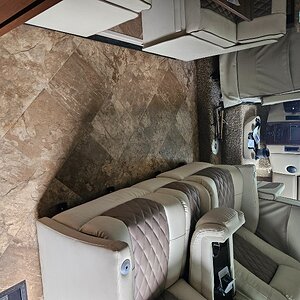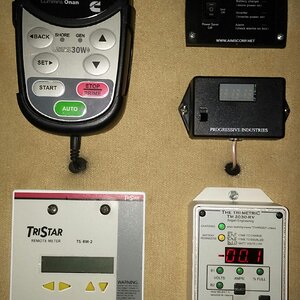Bob K4TAX
RVF Expert
- Joined
- Mar 13, 2021
- Messages
- 613
- Location
- Tennessee
- RV Year
- 2016
- RV Make
- Forest River
- RV Model
- Wildwood XL 253 RLXL
- RV Length
- 25 ft or so
- TOW/TOAD
- Chev 2011 Silverado Crew Cab LTZ
- Fulltimer
- No
There are too many variables to consider when asking the question "what is the minimum temperature design to prevent freezing". A simple answer for water is any temperature below 32 degrees F. Any line exposed will begin to show signs of freezing at or below 32 degrees. The amount of insulation around the line is very important. Just because it is enclosed inside a compartment is no assurance it won't freeze. If the line is against an outside wall there will be conduction of the cold and the line can freeze, although the compartment is above freezing. Physical conduction of temperature from one object to another is more efficient than air conduction. Usually, the inside temperature related to the outside temperature is about 10 to 20 degrees different. However, that does not consider "soak time" which is an important factor. If the temps briefly drop to a low of 20 degrees overnight that is not usually an issue. However, if the temperature stays at 20 degrees or lower for longer than 24 hours, one can be in serious trouble. Anytime the outside temperature is below freezing one can expect to need a heat source on the inside.
Someone asked about a 60 watt 12-volt bulb. That will draw about 5 amps from the 12-volt source. With a 100 aH battery, using 50% discharge as a safe level for battery survivability, that gives about 10 hours of operation for a single bulb. Do the math from here.
The best policy, good insulation, and making sure all doors, hatches, and such are securely closed and there are no cracks or crevices for the exchange of air to take place is the better approach. Keep cold air out, and warm air in.
Someone asked about a 60 watt 12-volt bulb. That will draw about 5 amps from the 12-volt source. With a 100 aH battery, using 50% discharge as a safe level for battery survivability, that gives about 10 hours of operation for a single bulb. Do the math from here.
The best policy, good insulation, and making sure all doors, hatches, and such are securely closed and there are no cracks or crevices for the exchange of air to take place is the better approach. Keep cold air out, and warm air in.












